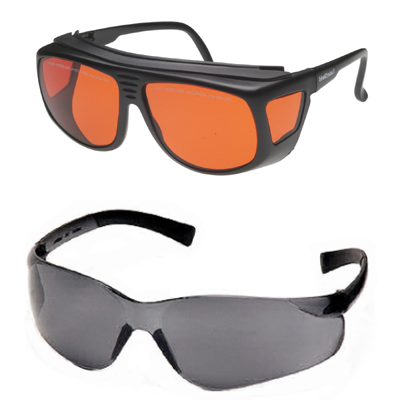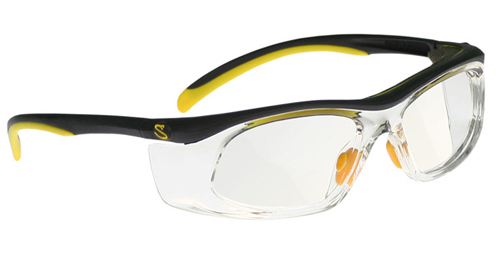Eye Protection
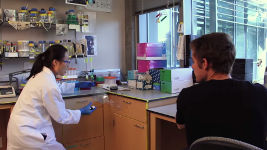 |
Make sure you are safely dressed for work in the "chemical splash zone" (adjacent area). |
Safety Glasses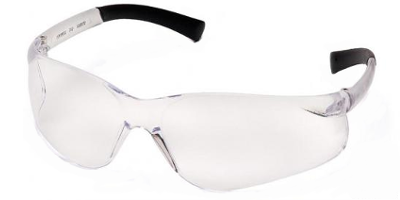
Eye protection is mandatory in all areas with potential for eye injury. This applies not only to persons who work continuously in these areas, but also to persons who may be in the area only temporarily, such as maintenance or administrative personnel. All eye protective equipment must comply with the requirements set forth in the American National Standards Institute (ANSI) standard "Occupational and Educational Eye and Face Protection," Z87.1-2010. Note that compliant eyewear will be labeled with "Z87" on the frame.
Safety glasses come in a wide variety of frames and styles to fit different size/shape faces. The PPE office stocks twelve different styles to accommodate most researchers. Researchers are encouraged to come to the PPE office if their glasses become damaged, unusable or no longer fit well. The PPE office also carries several pairs of Over-The-Glass (OTG) safety glasses for researchers with prescription eyewear. Safety glasses with reader magnification insets (diopter values from 1.0 - 3.0) are also available.
Splash Goggles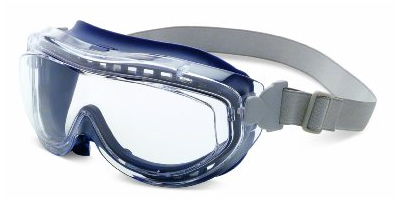
Although safety glasses provide adequate eye protection for many laboratory operations, they are not sufficient for operations with substantial danger from chemical splashes or dense particulate environments. Examples include: washing glassware in chromic acid solution, grinding materials, or laboratory operations using glassware where there is significant hazard of explosion or breakage (i.e., in reduced or excess pressure or temperature). The PPE office carries standard splash goggles, including those designed to fit comfortably over prescription glasses.
Face Shields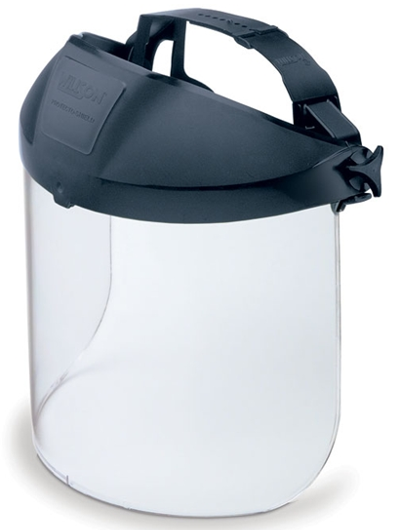
Face shields are required when there is need for protection of the entire face and throat. Examples include: using/mixing strong caustics or acids, or reactions with potential for explosion.
Specialty Eyewear
Some laboratory operations require specifically designed eye protection. Working with lasers or intense visible light are possible situations requiring specialty eyewear. Laser eyewear should be selected to protect against the specific wavelength of light generated and with a sufficient Optical Density (OD) for the given laser power. More information regarding laser safety can be found on the Research Safety - Laser Safety page. For intense non-laser light, lens tinting options are available to restrict visible light transmission or preferentially filter certain wavelengths. Contact EH&S if you would like any assistance selecting appropriate specialty eyewear.
Prescription Safety Eyewear
Standard prescription glasses are not rated for impacts and do not provide sufficient ocular coverage, as such they are not adequate for the laboratory. If OTG safety eyewear does not fit, or causes other functional issues, prescription safety glasses can be used.
Prescription safety glasses come in a variety of designs, only a portion of which are appropriate for the laboratory environment. Lab safety glasses must provide side protection for angular incursions and should minimize open space between the face and eyewear. It is best to consult with EH&S before purchasing prescription safety glasses.
***Emergency? Call 911***
If, despite all precautions, you experience a splash in the eye, proceed (with the assistance of a co-worker, if possible) to the nearest eyewash fountain and flush the eyes with water for at least 15 minutes. Flush from the eye outward. During this time, a co-worker should call 911 for assistance.

